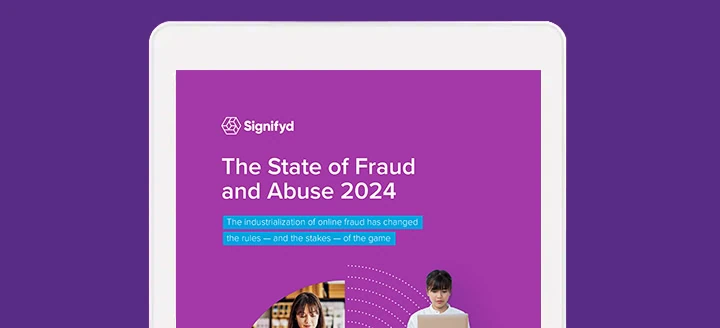This post summarizes a recent article by Karen Webster on PYMNTS.com.
In a recent in-depth article Karen Webster, President of PYMNTS.com, explains how much of what we’ve been waiting for in the payments industry may have already arrived without us noticing or how it may be just around the corner in 2017. The article is rich with examples of how these changes are coming about and where we’ll likely see these developments gain market share first. She lays out her observations in four parts, starting with a brief summary of how online shopping has changed.
1. The move to online shopping
While online shopping numbers have continued to rise year after year, Census still reports the average percentage of these transactions compared to in-store purchases is just 10%, which may be explained by lags between buyer behaviors and the time it takes to accurately track the data. But in certain industries the shift to online has been dramatic and is clearly a sign of what is yet to come for other verticals.
70% of book sales are now online and the majority are from Amazon. Barnes & Noble has consistently reported a steady decline in in-store sales as they struggle to compete against the leading internet retailer.
Non-perishable groceries like toilet paper, laundry detergent and cleansers are increasingly being purchased online. Brand-interchangeable bulk items like these clog up a shopping cart and ordering them online simplifies life.
While pets.com may have been ahead of their time in 1998, more and more pet owners are taking their business online to stores like PetFlow and Amazon. An added advantage of ordering online is access to prescription food or smart food dishes that automatically send a signal to reorder depending on how often and how much your pet eats.
There was a time when the idea of purchasing a car without a test drive seemed incredulous but by 2004 eBay Motors had sold a million, proving that photos, reviews and comparison portals could indeed disrupt the traditional car buying experience.
But what about those spur-of-the-moment needs we all have like cocktails for a last minute dinner party? Forget the liquor store. With sites like LiquorMart.com and AlcoholDelivery.com, you can conveniently order your spirits online and even have them delivered to your door within an hour.
2. Capacity to Buy Online and Pick-Up in Store
A combination Webster calls out as progressive are brands who have combined the benefits of in-store shopping (location, ambience, personal service) with the convenience of buying or paying online.
Starbucks has seen great success with the introduction of their app that not only allows people to avoid heavy wait times in store, but also offers incentives to earn free drinks and priority ordering. In just its first two years their app boasts more than 16 million users representing 20% of all Starbucks transactions within the United States.
Fuel suppliers have begun incorporating cloud and app payments at various gas stations, allowing drivers to keep cash and cards in their wallet while they fill up. This also gives station owners a feasible and affordable alternative to EMV chip adaption. Several chains like ExxonMobil and Chevron are partnering with mobile wallet apps like Apple Pay and Android Pay.
Major brand department stores like Walmart allow customers to link their credit card credentials with a QR code in-store, making it possible to purchase items on credit from the convenience of your mobile phone.
3. Embedded payments, emboldened partnerships
When Uber introduced the ability to pay for a ride through embedded payments, it sent a spark of disruption through the payments community. Riders simply had to link a payment method to the app and never had to reach for their wallet at the end of a trip or calculate a tip again.
As Uber has steadily improved, embedded payments within apps have become ubiquitous. Amazon’s Alexa can order a pizza and pay for it without you actually interacting with the restaurant. Apple’s Siri can order an Uber and send a friend money via SquareCash. Facebook Messenger lets users book flights with JetBlue using Masterpass. Can you spot the pattern?
Businesses are working together to create smooth, convenient purchase and payment options for customers by simplifying financial transactions with embedded payments. Behind the scenes, powerful partnerships are being formed that could change the economics of certain industries.
4. Application based payments over equipment based platforms
Webster takes a realistic perspective on application based payments noting that a heavy focus has been placed on equipment based payment methods like Apple Pay, Samsung Pay and Android Pay in recent years. Yet these have failed to take flight with the gusto each brand anticipated, mainly because there are too many pieces required to make the mechanism work. Users need to purchase new phones and apps while retailers need to invest in new equipment to accommodate each phone and app. With the increase in ecommerce sales, including online to in-store pick up, merchants can invest less in equipment while still enhancing their overall product and service offering across an omnichannel experience.
The transition to an ecommerce-heavy ecosystem has opened a world of opportunities for merchants to reach their audience in new, holistic ways with non-invasive payment tools. They can help alleviate stress from the purchase process and form new partnerships that add value to their market position and the user. Considering the pace at which the industry is evolving, veterans like PayPal and Amazon may have an advantage, but there is still plenty of room for disruption and plenty of time before winners can be clearly declared. 2017 may be the year we see things come full circle or it may be 2020. The truth is, most of us have been watching this space for so long that we may not notice until it’s already happened.
Karen Webster is a leading expert on emerging payments and a strategic advisor to top-tier executives in the payments industry. She is CEO of Market Platform Dynamics, President of PYMNTS.com and an avid entrepreneur who also serves on the boards of a number of emerging companies. PYMNTS.com provides global coverage of the payments industry with breaking news and in-depth stories from leading experts in the field.











